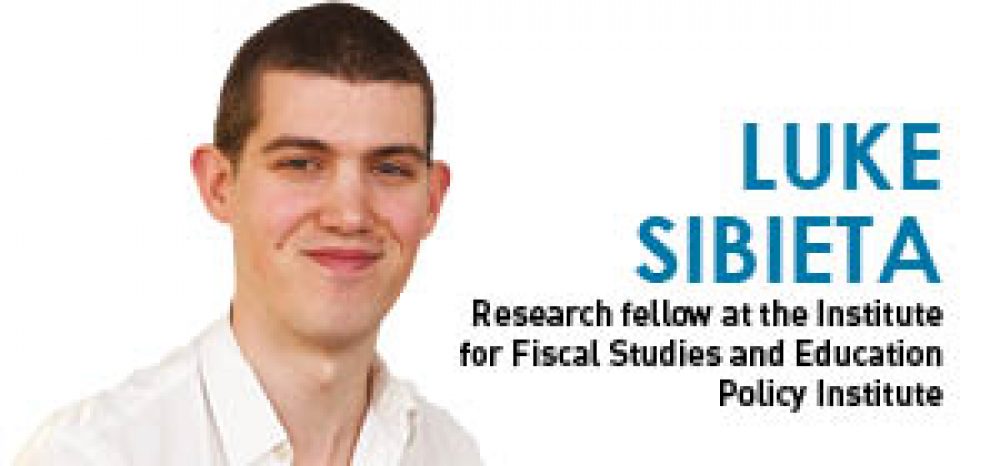The government’s policy to pay schools to get more pupils studying maths is misguided, argues Luke Sibieta – why not raise sixth-form funding instead?
In Wednesday’s Budget, the Chancellor announced various measures aimed at expanding the teaching of maths in schools and colleges. One of the most eye-catching announcements was a commitment to pay “a £600 maths premium for schools [and colleges], for every additional pupil who takes A-level or core maths.”
Precise details about how this policy will work are not yet available. But, as far as I understand it, the intention is to pay schools and colleges £600 for every additional pupil who takes A-level or core maths over and above some baseline (probably the number in the previous year). This represents a lot less than paying £600 for every pupil taking maths.
The proposed formulation could also end up making the funding system horribly complicated. Paying for an additional five pupils in year one would be simple enough, but it seems unlikely that funding would drop if numbers taking maths dropped the following year as that could create volatility in funding levels. If the funding stayed that could create a ratchet effect where schools and colleges see their funding rise when maths numbers go up, but don’t see a fall when they go down.
Schools might start simply enrolling more people onto maths A-levels just to get the cash
It is also not clear that changes in maths numbers from year to year are down to schools’ actions. They are more likely to reflect changes in young people’s choices or the sorts of pupils who attend a school or college in a given year. Such a policy could thus get very messy and lead to differences in funding across schools and colleges that are increasingly hard to justify – exactly the opposite of what funding reforms for schools and colleges have been trying to achieve for the past decade.
Putting the complexities to one side, will paying schools extra for more pupils taking A-level or core maths actually increase the numbers of pupils taking maths? One concerning possibility is that schools might start simply enrolling more people onto maths A-levels just to get the cash, even if there is no intention of them taking the exam. But as for genuine increases in numbers, the answer is probably no.
This policy provides financial incentives for schools to supply more maths places. But the number of young people taking maths can only increase if more young people want to take more maths and schools have the teachers to teach them. Unfortunately, training targets on new maths trainees have been missed for successive years, suggesting this is a major barrier to expanding maths provision.
On a more optimistic note, the numbers taking maths A-level have actually been rising year on year since at least 2009. Currently, about 24% of A-level students take maths, making it the most popular A-level subject. There is, however, a very clear gender divide – as there are with other STEM subjects – with only about 18% of girls taking maths compared to one third of boys. Differences also emerge by socio-economic background, ethnicity and other pupil characteristics. Such issues are unlikely to be solved by financial incentives of this nature and likely run much deeper.
Given the continued squeeze on resources, schools and colleges will welcome any extra cash. On present estimates, spending per pupil aged 16-19 in school sixth forms and colleges is estimated to be the same in 2020 as it was thirty years earlier in 1990 (after adjusting for inflation). However, the proposed way of allocating this maths premium would add unnecessary complexity and is unlikely to increase the numbers of pupils taking maths. A simpler way of providing more resources to sixth forms and colleges would have been to increase the standard pupil rates in the 16-19 education national funding formula.
Luke Sibieta is a research fellow at the Institute for Fiscal Studies and Education Policy Institute







Your thoughts